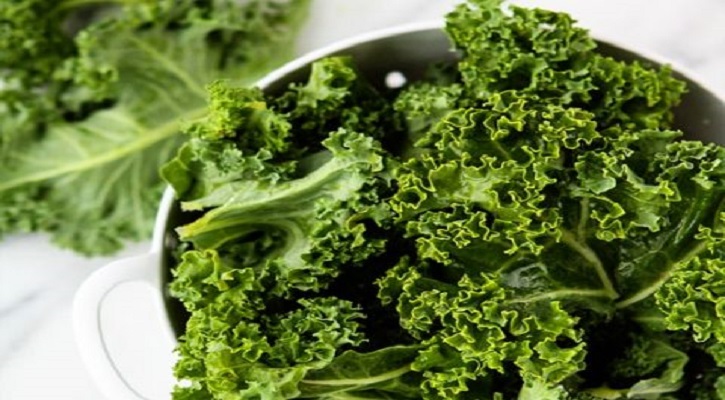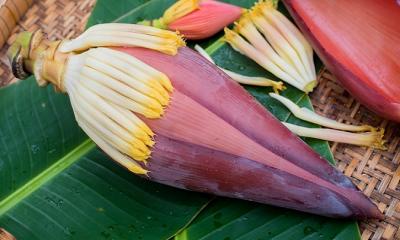
Health Benefits of Kale
- Womenscorner Desk
- September 6, 2020
Kale is a green, leafy, cruciferous vegetable that is rich in nutrients. It may offer a range of health benefits for the whole body. It is a member of the mustard, or Brassicaceae, family, as are cabbage and Brussels sprouts. Possible benefits include helping manage blood pressure, boosting digestive health, and protecting against cancer and type 2 diabetes.
This article looks at the nutritional content and health benefits of kale, how to include it in the diet, and reasons why some people should not eat too much of it.
Benefits Of Kale: Consuming kale may help boost digestive health, among other benefits. Kale contains fiber, antioxidants, calcium, vitamins C and K, iron, and a wide range of other nutrients that can help prevent various health problems. Antioxidants help the body remove unwanted toxins that result from natural processes and environmental pressures.
These toxins, known as free radicals, are unstable molecules. If too many build up in the body, they can lead to cell damage. This may result in health problems such as inflammation and diseases. Experts believe that free radicals may play a role in the development of cancer, for example.
Read More : Read About the Most Healthful Vegetables!
Diabetes : The American Diabetes Association recommend consuming foods that are rich in vitamins, minerals, fiber, and antioxidants. There is evidence that some of these may offer protection against diabetes.
Fiber: A 2018 study concluded that people who consume the highest amounts of dietary fiber appear to have a lower risk of developing type 2 diabetes. Consuming dietary fiber might also lower blood glucose levels, the authors note.
Antioxidants: Authors of a 2012 article note that high blood sugar levels can trigger the production of free radicals. They note that antioxidants, such as vitamin C and alpha-linolenic acid (ALA), can help reduce complications that may occur with diabetes. Both of these antioxidants are present in kale.
Read More : Some Home Remedies for Natural Anxiety Relief
Heart disease : Various nutrients in kale may support heart health.
Potassium: The American Heart Association (AHA) recommend increasing the intake of potassium while reducing the consumption of added salt, or sodium. This, say the
AHA, can reduce the risk of high blood pressure and cardiovascular disease. A cup of cooked kale provides 3.6% of an adult’s daily needs for potassium.
Fiber: A Cochrane review from 2016 found a link between consuming fiber and a lower blood lipid (fat) levels and blood pressure. People who consumed more fiber were more likely to have lower levels of total cholesterol and low-density lipoprotein (LDL), or “bad” cholesterol.
Cancer : Chlorophyll: Kale and other green vegetables that contain chlorophyll can help prevent the body from absorbing heterocyclic amines. These chemicals occur when people grill animal-derived foods at a high temperature. Experts have linked them with cancer.
Read More : How Many Types of Anxiety Disorders?
The human body cannot absorb much chlorophyll, but chlorophyll binds to these carcinogens and prevents the body from absorbing them. In this way, kale may limit the risk of cancer, and pairing a chargrilled steak with green vegetables may help reduce the negative impact.
Antioxidants: The vitamin C, beta carotene, selenium, and other antioxidants in kale may help prevent cancer. Studies have not found that supplements have the same effect, but people who have a high intake of fruits and vegetables appear to have a lower risk of developing various cancers. This may be due to the antioxidants these foods contain.
Fiber: A high consumption of fiber may help reduce the risk of colorectal cancer, according to a study from 2015.
Bone health : Calcium and phosphorus are crucial for healthy bone formation. Some research has suggested that a high intake of vitamin K may help reduce the risk of bone fractures.
Read More : What are anxiety disorders?
A cup of cooked kale provides almost five times an adult’s daily need for vitamin K, around 15–18% of their calcium need, and about 7% of the daily phosphorus requirement.
Digestion : Kale is high in fiber and water, both of which help prevent constipation and promote regularity and a healthy digestive tract.
Skin and hair : Kale is a good source of beta-carotene, the carotenoid that the body converts into vitamin A as it needs it. Beta-carotene and vitamin A are necessary for the growth and maintenance of all body tissues, including the skin and hair.
The body uses vitamin C to build and maintain collagen, a protein that provides structure for skin, hair, and bones. Vitamin C is also present in kale. A cup of cooked kale provides at least 20% of a person’s daily need for vitamin A and over 23% of the daily requirement for vitamin C.
Eye health : Kale contains lutein and zeaxanthin, an antioxidant combination that may help reduce the risk of age-related macular degeneration. Vitamin C, vitamin E, beta-carotene, and zinc also play a role in eye health. All of these are present in kale.
Read More : Depression is a serious disorder! Read Details
Dietary tips : Kale is a crisp and hearty vegetable, with a hint of earthiness. The flavors and nutritional content can vary between types. Younger leaves and summer leaves tend to be less bitter and fibrous.
Curly kale: This is the most commonly available type. It is usually bright green, dark green, or purple, with tight, ruffled leaves that are easy to tear. To remove the leaves from the fibrous stalk, run your hand down the stalk in the direction of growth.
Lacinato or dinosaur kale: This dark blue-green variety is firmer and more robust than curly kale. It is known as dinosaur kale because of its scaly texture. The leaves tend to be longer and flatter and maintain their texture after cooking. Less bitter than curly kale, dinosaur kale is ideal for making kale chips.
Red Russian kale: This is a flat-leaf variety that looks a little like oak leaves. The stalks are slightly purple, and the leaves have a reddish tinge. People may find the stalks too fibrous to eat, but the leaves are sweet and delicate, with a hint of pepper and lemon, almost like sorrel. People can add them raw to salads, sandwiches, and juices, or as a garnish.
Read More : Is there any incident that stuck your life?
Kale grows well in the colder winter months, making a good addition when other fruits and vegetables are less readily available. It is best to cook winter kale, as colder weather can turn the sugars in kale into starch, increasing the bitterness and fiber content.
Serving suggestions : People can eat kale raw, or steam, braise, boil, or sautée it, or add it to soups and casseroles.
Raw: Scrunching the leaves briefly in the hands can make them easier to digest. Add to salads, sandwiches, wraps, or smoothies.
As a side dish: Sauté fresh garlic and onions in olive oil until soft. Add kale and continue to sauté until desired tenderness. Alternatively, steam for 5 minutes, then drain and stir in a dash of soy sauce and tahini.
Kale chips: Remove the ribs from the kale and toss in olive oil or lightly spray and sprinkle with a combination of cumin, curry powder, chili powder, roasted red pepper flakes or garlic powder. Bake at 275°F for 15–30 minutes to desired crispness.
Smoothies: Add a handful of kale to any favorite smoothie. It will add nutrients without changing the flavor very much.
Read More : Struggle story of a bird to reach its goal
Source : Google





